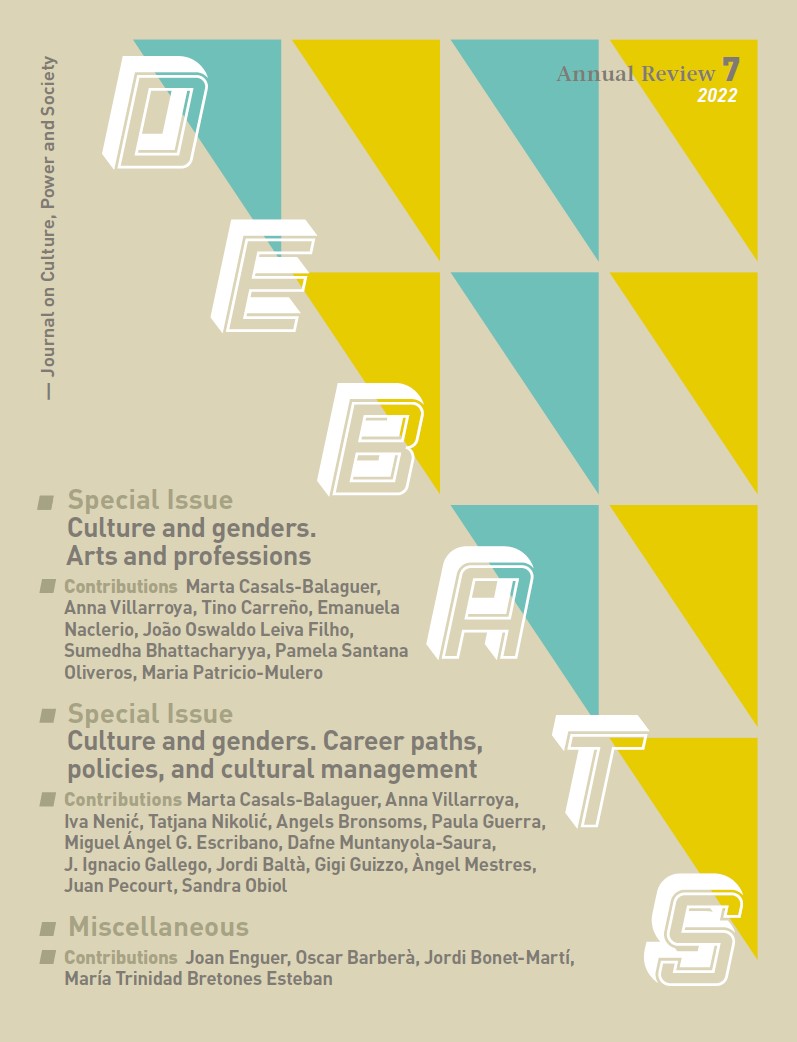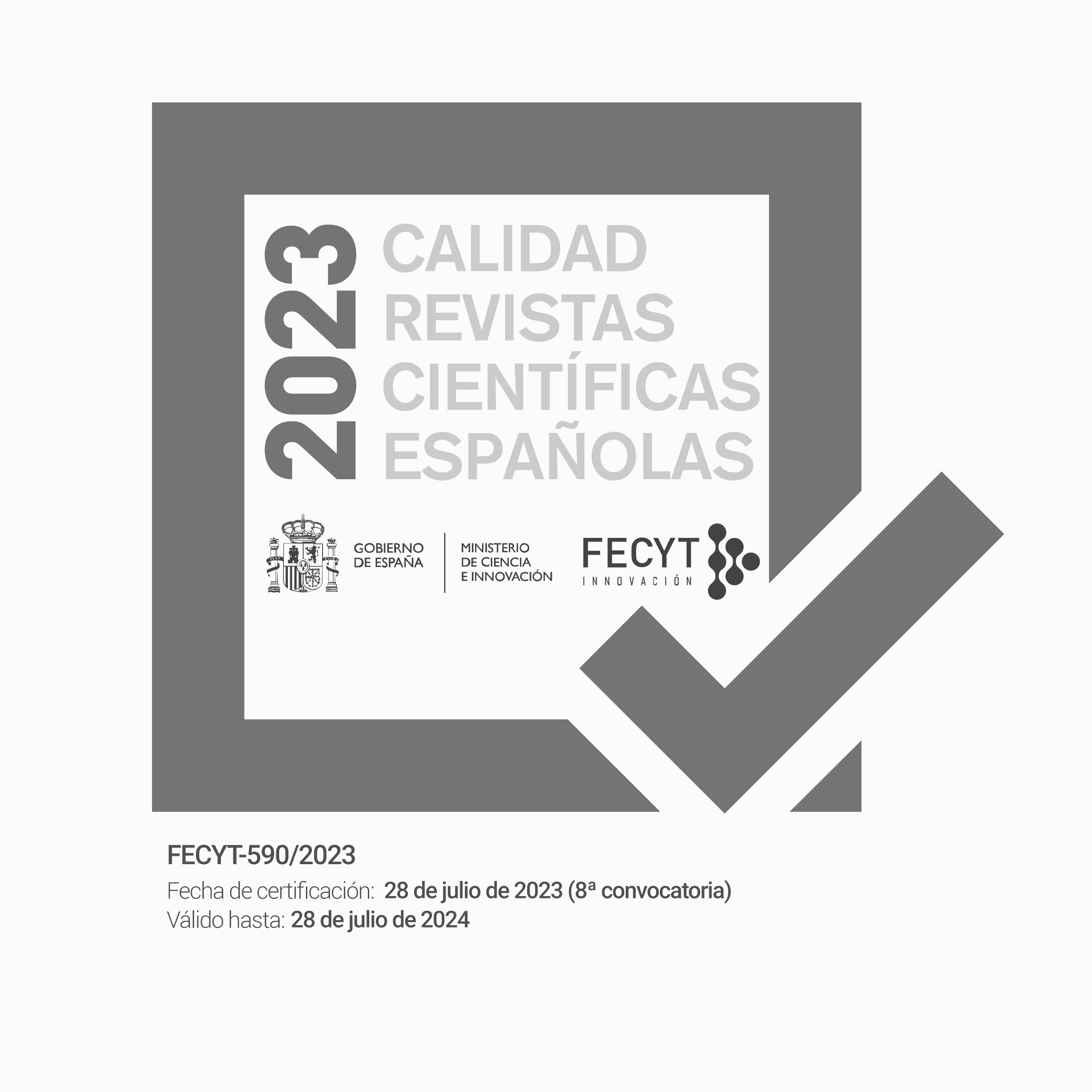Female labour and leadership in music Contexts, constraints, future(s)
Palabras clave:
women in music, gender stereotypes, gender equality, cultural management, cultural policy, independent music sceneResumen
Here we explore the contemporary practices of female participation in the music scenes in Serbia, and to an extent, in the Balkans. This research identified and described the possibilities, gendered constraints, and acts of transgressions that together weave a complex dynamic of female participation in popular music, in relation to the changing field of dominant gender ideologies in Serbia and the surrounding region. This work provides a critical analysis of gender issues in music-making and performing and of the topic of gendered labour in music, by relying on multiple case studies grounded in local contexts. We consider the mores and demands of the music market
and everyday culture, their link to personal experiences, and the reach of the social institutions regarding music. Either as role models or cherished leaders, female musicians employ different tactics to fight stereotypes, strengthen communities, and ensure female participation. This work maps the strategies and tools they have been putting in place in order to sustain their audience, income, and presence to the best possible extent. Bearing in mind the imperative of transforming a standard way of working, communicating with audiences, and maintaining earning potential, this text singles out practices that could be recognised as (female) leadership in contemporary circumstances. We also consider a wider spectrum of roles that female musicians and music professionals have taken on or were awarded within their professional circles, local scenes, communities, or wider society.
Descargas
Citas
Ambrozi , D. (1991). Žene u rocku kod nas? Ispada da su zna ajnije Magi i Anja nego mi, koje smo cela grupa [Women in
our Rock? It seems that Magi and Anja are more important than us, who are a group]. Ritam, March 1991. Yugopapir
online archive. http://www.yugopapir.com/2016/03/boye-zene-u-rocku-kod-nas-ispada-da-su.html
Baltà Portolés, J., Dragi evic Šeši , M. (2017). Cultural rights and their contribution to sustainable development: implications
for cultural policy. International Journal of Cultural Policy, 23:2, pp. 159-173.
http://dx.doi.org/10.1080/10286632.2017.1280787
Bani , S., Goji , N. (2018) Kako žive umjetnice? [How do female artists live?] Prostor Plus: Rijeka.
https://drive.google.com/file/d/16XLogjHZGytlhwasjJoZ3ttNpDVxcQFH/view
Barada, V., Primorac, J. (2014). Non-Paid, Under-Paid and Self-Exploiting Labour as a Choice and a Necessity: Example
of Women in Creative Industries. In M. Adamovi , B. Gali , A. Gvozdanovi , A. Maskalan, D. Poto nik & L. Somun
Krupalija (Eds.), Young Women in Post-Yugoslav Societies: Research, Practice and Policy (pp. 143-166). Institute for Social
Research in Zagreb.
Caust, J. (2020). Arts Leadership in Contemporary Contexts. Routledge, Taylor & Francis Group.
Ceribaši , N. (2001). In between ethnomusicological and social canons: historical sources on women players of folk music
instruments in Croatia. Narodna umjetnost-Hrvatski asopis za etnologiju i folkloristiku, 38(1), pp. 21-40.
Diamond, B., Moisala, P. (2000). Introduction. Music and Gender: Negotiating Shifting Worlds. In P. Moisala, B. Diamond
(Eds.), Music and gender. Urbana: University of Illinois Press, pp. 1-19.
Doubleday, V. (2008). Sounds of power: An overview of musical instruments and gender. Ethnomusicology Forum 17(1), pp. 3-39.
Downing, S. L. (2010). Agency, leadership, and gender negotiation in Balinese girls’ gamelans. Ethnomusicology 54(1), pp. 54-80.
Edelman, D., Green, J. (2017). The mind of the artist / the mind of the leader: what neuroscience can teach us about the
training of arts managers and leaders. ENCATC Journal of Cultural Management and Policy, 7 (1), pp. 17-26.
Hanash Martínez, M. (2020). Feminist Cyber-resistance to Digital Violence: Surviving Gamergate. Debats. Journal on culture,
power and society, 5, pp. 287–302. https://doi.org/10.28939/iam.debats-en.2020-17
Herndon, M., & Ziegler, S. (Eds.) (1990). Music, gender, and culture. Wilhelmshaven, Germany: Florian Noetzel Verlag.
Hofman, A. (2015). Music (as) Labour: Professional Musicianship, Affective Labour and Gender in Socialist Yugoslavia.
Ethnomusicology Forum, 24, 1, pp. 28-50. https://doi.org/10.1080/17411912.2015.1009479
Homan, S. (2013). From Coombs to Crean: popular music and cultural policy in Australia. In Homan, S., Cloonan, M.,
Cattermole, J. (Eds.) Popular Music and Cultural Policy. Routledge, Taylor & Francis: London and New York, pp. 108-125.
International Journal of Cultural Policy, 19 (3), pp. 382-398. https://doi.org/10.1080/10286632.2013.788164
Jovi evi , J. (2021). The Pale Image of the Jazz Female Instrumentalists in Southeastern Europe. In Herzig, M., Kahr, M.,
and Reddan, J. (Eds.) Handbook of Jazz and Gender, Routledge (in preparation).
Koskoff, E. (Ed.) (1987). Women and music in cross-cultural perspective. Vol. 79. Urbana: University of Illinois Press.
Koskoff, E. (2000). Foreword. In Moisala, P., and B. Diamond (Eds.) Music and gender. Urbana: University of Illinois Press,
pp. ix-xiii.
Ljubi i , V. (2014). Discrimination of Young Women in the Croatian Labour Market. In Adamovi , M., Gali , B., Gvozdanovi ,
A., Maskalan, A., Poto nik, D., Somun Krupalija, L. (Eds.) Young Women in Post-Yugoslav Societies: Research, Practice and
Policy. Institute for Social Research in Zagreb, pp. 113-142.
Medina-Vicent, M. (2019) Woman, manage your life! The Life-Work Balance Discourse in Popular Management
Literature Aimed at Women. Debats. Journal on culture, power and society, 4, pp. 59–70.
https://doi.org/10.28939/iam.debats-en.2019-5
Moisala, P. (1999). Musical gender in performance. Women & Music, p. 1. Gale Academic OneFile, accessed 15 May 2021.
Neni , I. (2012). Svira ice kao loši subjekti [Female instrumentalists as bad subjects]. In Duha ek, D., Lon arevi , K. (Eds.)
Kultura, rod, gra anski status. Centar za studije roda i politike, Fakultet politi kih nauka: Beograd, pp. 143-155.
Neni , I. (2013). Discrete cases: Female traditional music players in Serbia. New Sound, 41, I/2013, pp. 87-97.
Neni , I. (2015). We are not a female band, we are a band! Female performance as a model of gender transgression in Serbian
popular music. Musicology: Journal of the Institute of Musicology of the Serbian Academy of Sciences and Arts, 19, pp. 119-133.
Neni , I. (2019). Guslarke i svira ice na tradicionalnim instrumentima u Srbiji: identifikacija zvukom [Gusle players and other female
traditional instrumentalists in Serbia: identification by sound]. CLIO: Beograd.
Neni . I. (2020). ‘Roots in the age of Youtube’: Old and contemporary modes of learning/teaching in Serbian frula playing.
New Sound 56, II, pp. 28-47.
5937/newso2056028N
Nikoli , T. (2016). Rodni odnosi na alternativnoj muzi koj sceni Srbije i regiona [Gender relations within the alternative music scene
of Serbia and the region]. Pokrajinski zavod za ravnopravnost polova: Novi Sad.
Nikoli , T. (2017) U eš e i položaj žena u stvaranju muzike u bivšoj Jugoslaviji. [Participation and the position of women in
creating music in former Yugoslavia]. Zbornik završnih radova studenata 2015/2016 i 2016/2017. Beogradska otvorena
škola, pp. 115-124.
Nikoli , T. (2019) Umetni ki projekti sa migrantkinjama u Srbiji - pitanja kulturnog i rodnog identiteta. [Art projects with
female migrants in Serbia - the question of cultural and gender identity]. Interkulturalnost: asopis za podsticanje i
afirmaciju interkulturalne komunikacije, 18, pp. 84-95.
Nikoli , T. (2020). Društveni angažman mladih umetnica u digitalnom kontekstu. [Social engagement of young female
artists in the digital context]. Kultura: asopis za sociologiju i teoriju kulture i kulturnu politiku, 169, pp. 86-112.
Price, J. (2017). The construction of cultural leadership. ENCATC Journal of Cultural Management and Policy, 7 (1), pp. 5-16.
Rankovi , S. (2019). Tradicionalno pevanje Srba iz Hrvatske u svetlu savremenih etnomuzikoloških istraživanja. [The
Traditional Singing of Serbs from Croatia in the Light of Contemporary Ethnomusicological Research]. In Staniši , S.
(Ed.), Baština krajiških Srba. Novi Sad: Zavi ajno udruženje “Sava Mrkalj”, pp. 133-173.
Santos Ortega, A., Muñoz Rodríguez, D. (2019). The cult of the entrepreneur within the EU framework: The advance
of an entrepreneurship activation model. Debats. Journal on culture, power and society, 4, pp. 13–24.
https://doi.org/10.28939/iam.debats-en.2019-2
Slobin, M. (1993). Subcultural sounds: Micromusics of the West. Hanover and London: Wesleyan University Press.
Stalp, M. C. (2015). Still a man’s art world: The gendered experiences of women artists. Journal of Research on Women and
Gender, 6, pp. 40–55.
Starratt, R. J. (1993). The drama of leadership. London: Falmer Press.
Street, J. (2013). Music, markets and manifestos. In Homan, S., Cloonan, M., Cattermole, J. (Eds.) Popular Music and Cultural
Policy. Routledge, Taylor & Francis: London and New York, pp. 7-24. International Journal of Cultural Policy, 19 (3), pp.
-297. https://doi.org/10.1080/10286632.2013.788158
Sutherland, R. (2013). Why get involved? Funding reasons for municipal interventions in the Canadian music industry. In
Homan, S., Cloonan, M., Cattermole, J. (Eds.) Popular Music and Cultural Policy. Routledge, Taylor & Francis: London and
New York, pp. 92-108. International Journal of Cultural Policy, 19 (3), pp. 366-381. DOI:10.1080/10286632.2013.788160
Todorova, M. (1997). Imagining the Balkans. New York: Oxford University Press.
Tomši , V. (1981). Žena u razvoju socijalisti ke samoupravne Jugoslavije. [A Woman in the Development of the Socialist Self-
Management Yugoslavia]. Beograd: Novinsko-izdava ka radna organizacija Jugoslovenska stvarnost — OOUR Jugoslovenski
pregled. AFŽ Archive, visited 15th May 2021. http://afzarhiv.org/items/show/382
Todorovi , M. (2013). Benevolentni seksizam i rodna ravnopravnost. [Benevolent Sexism and Gender Equality] Genero:
asopis za feministi ku teoriju i studije kulture, 17, pp. 1-22.
Troka, D. (2002). You heard my gun cock: Female agency and aggression in contemporary rap music. African American
Research Perspectives 8, pp. 82-9.
Wells, S. E. (2011). Women as Musical Leaders: Experiences and Perceptions of Female Conductors and Concert Masters in Perth,
Western Australia. Master thesis. Perth: School of Music, University of Western Australia.
Descargas
Publicado
Cómo citar
Número
Sección
Licencia
Sin perjuicio de lo dispuesto en el artículo 52 de la Ley 22/1987 de 11 de noviembre de Propiedad Intelectual, BOE del 17 de noviembre de 1987, y conforme al mismo, los autores o autoras ceden a título gratuito sus derechos de edición, publicación, distribución y venta sobre el artículo, para que sea publicado en Debats. Revista de cultura, poder y sociedad.
Debats. Revista de cultura, poder y sociedad se publica bajo el sistema de licencias Creative Commons según la modalidad «Reconocimiento - NoComercial (by-nc): Se permite la generación de obras derivadas siempre que no se haga un uso comercial. Tampoco se puede utilizar la obra original con finalidades comerciales».
Así, cuando el autor o autora envía su colaboración, acepta explícitamente esta cesión de derechos de edición y de publicación. Igualmente autoriza a Debats. Revista de cultura, poder y sociedad, la inclusión de su trabajo en un fascículo de la revista para que se pueda distribuir y vender.











